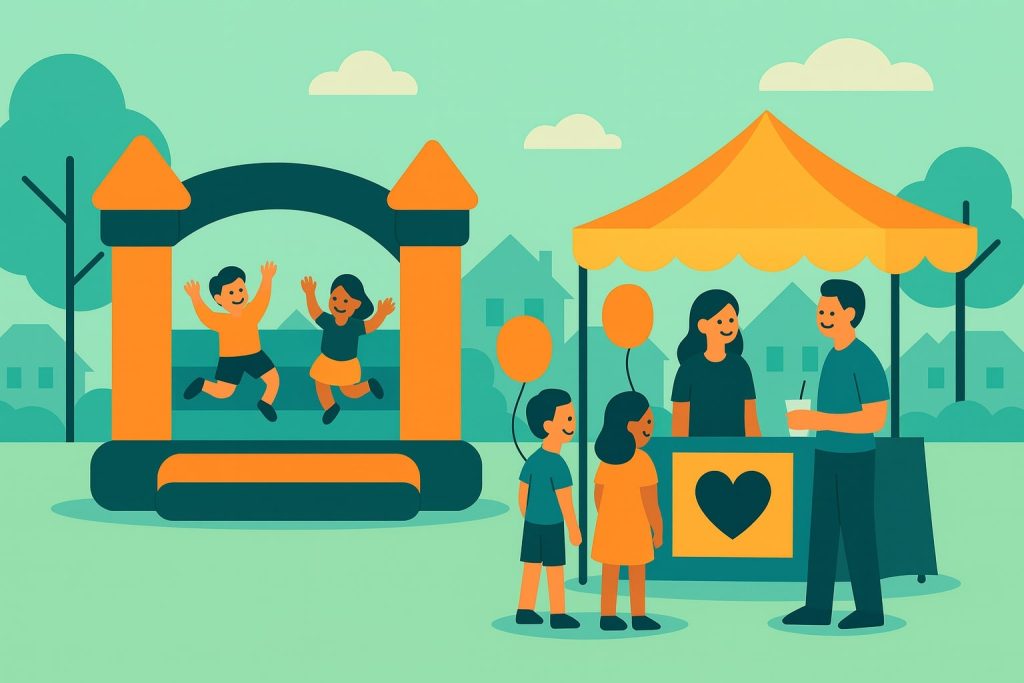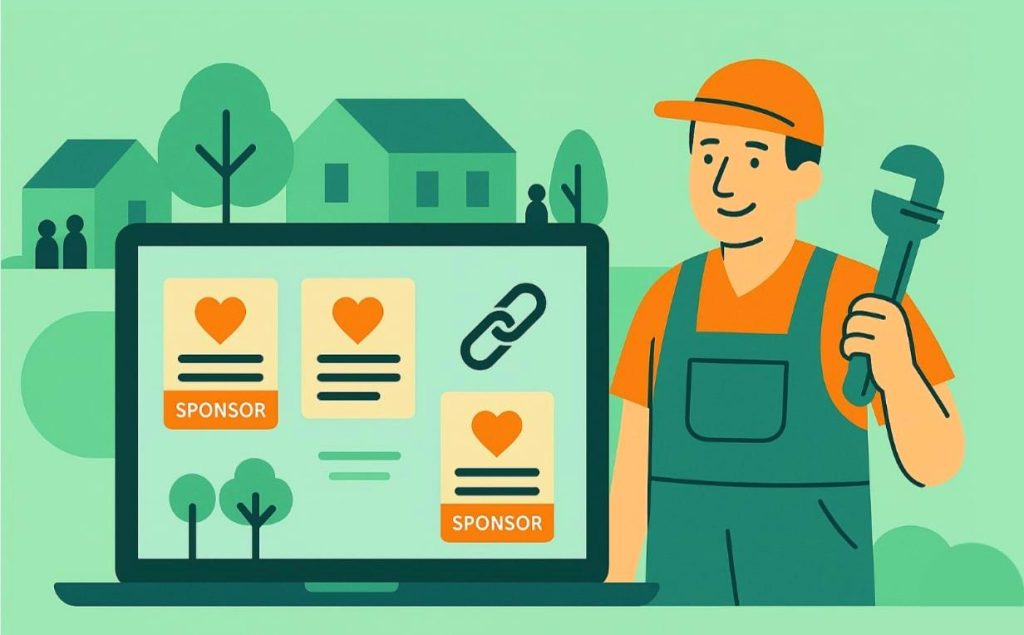In addition to Local Sponsorships, we’ve also found local blogs to be a scalable publisher-type for hyper-local visibility and link building campaigns.
This practical guide to local blog engagement – based on how we’ve grown our program over the past few years to build 100s of city-specific links per month – should help demonstrate a link building path forward for both Enterprise teams seeking scaled local links to city-specific pages across the country as well as small businesses with single or just a few locations.
In this guide you’ll find the following:
1) our brief history of local link building
2) local blogs defined: the local blog “universe”
3) local blog engagement strategies
4) local blog discovery
5) citation-justified relevance
6) scaled local blog engagement campaign
1) Our brief history of local link building and visibility
For our first attempt at local – in 2014 or so – we tried “Links and Resource Page” link building (which we call LNR internally). What we discovered – quickly – was that this didn’t work well. LNR pages – locally speaking – lack the volume and topical density to scalably support the tactic. Not saying it’s impossible, just that we couldn’t figure out how to make it work, especially when we price on a per-link basis.
In 2015 or so we moved into prospecting for local event and organization sponsorships in an effort that morphed into ZipSprout.
Major cities are crawling with sponsorship opportunities, and even most smallish cities have a Little League or two, several festivals and a farmer’s market.
That said, inventory got a bit slim in some cities and, frankly, it costs more to execute city-specific sponsorship programs because there are so few sub $500 opportunities that you must move quickly into the $500-1000 per-op price point. This has frequently proven scale-prohibitive even for Enterprise unless they’re seeking lower-cost ops in any/all major US cities.
And so we continued to “hack away” at solving local blog engagement, using the prospecting lessons we learned from sponsorship discovery… and in early 2017 or so we came to the following conclusions about the local blog space that continue to support and drive our efforts.
2) Local blogs defined: the local blog “universe”
We currently group publishers – local and otherwise – into the following two categories: Ad-Supported and Visibility-Supported. Here’s how we characterize these two types.
Ad-Supported Publishers (aka the 1% of publishers)
- local news sites
- lifestyle magazines (usually print-first legacy publishers with a token web nod)
- donation-supported independent local news publishers (small but growing publishing type)
- high profile local bloggers (usually end up working for newspapers)
- frequently have subscribers, either paid or newsletter, etc
- often have “print” reach
- strong social reach
- audience-first (usually) in publishing choices
Visibility-Supported Publishers (the 99% of publishers)
- local organizations such as:
- specialty stores/product manufacturers
- services – health/home services/tourism
- local non-commercial, community-centric organizations
- “less-visible” local lifestyle bloggers (parents, foodies, fashion, nightlife, etc…)
- rarely have subscribers, social or otherwise
- marketing-first (usually) in publishing choices
As an agency we primarily concentrate on the “visibility-supported” publishers. We’ve never really tried that hard going after the ad-supported publishers, though have heard of “Top 10 Cities for XYZ Demographic” campaigns that seemed to play well circa 2015. So it’s definitely possible to target top-tier local publishers, though of course you’d be hard pressed to build direct links to your site’s local city pages (in other words, sales pages) with that publisher type.
3) Local blog engagement strategies
Since we don’t really go after the Ad-Supported publishers, for this section we’ll examine some engagement approaches for all those visibility supported hyper-local publishers out there… and in the next section we’ll dig into quick tests for what types of organizations have blogs in your target location.
Before speculating on engagement approaches we haven’t mastered I’ll share what we currently do. Nothing crazy here – it’s a pure “execution” play.
We pitch content topics – usually topics unrelated or lightly-related to location – and hope publishers will be open to adding them to their sites. Conversions vary based on the quality of our topic pitch and how well we’ve lined up topics with our prospective publishers. This has worked but I’d caution other marketers that it’s an uphill approach and we’re seeing declining returns.
Luckily there’s no shortage of ideas to try!
Here are several other approaches you could test, some of which we’ve actually seen in the wild. Some we’ve tried but not really gotten to work as efficiently at scale as topic pitches.
>> Local Blog Engagement Strategies
Group Interviews with Local Service Experts Adjacent to Publisher
So if you’ve got a list of dog-boarding sites that have blogs you could interview local dog walkers to find the best places to walk dogs. In theory the dog boarding folks, so long as they don’t compete with the dog walkers, won’t begrudge some visibility for non-competing service providers who can help their site visitors learn some great places to walk dogs. How does your link fit? It depends on what pages you want links to. If you’re a real estate service you could add a “dog parks” section to your city page and link there.
Coupon/Savings Roundups of Adjacent and Related Products/Services
OK, so like the example above we’re going to adjacent businesses to gather up their promotions. So you approach a local yoga studio with a collection of local yoga-adjacent coupons and deals that you’ve aggregated. Think acupuncture, massage, meditation, health food etc – assuming there are coupons/deals for those of course. What’s in it for the yoga studio? Not sure – you might have to help get their studio cross-promoted on the sites of other local service providers? And where does your link fit in here – do you have to have a coupon? Yeesh. The more I write the more convoluted this idea’s feeling but I think there’s something to it if you have the right outreach approach. This one might take phone calls.
Upcoming Events of Interest to Target Audiences
General contractors and home builders with blogs might be open to write ups about upcoming home-related events. Interview someone from the event to really increase your likelihood of getting published. How does your link fit in here? Maybe it doesn’t, so try the local pediatrician’s offices and showcase upcoming educational events for parents maybe? How about upcoming bridal shows for the wedding photographers in your city? You may have to run through quite a few to find a fit but there’s probably one out there, right? Lastly, if you’re investing in staffing booths at local events then you should definitely be taking pictures and creating content from your time at the event that could fit both on your blog, the blog of the event itself as well as other publishers in your area.
Spotlight on Mover and Shaker Types
Perhaps not too far removed from the group interview concept above, what about solo profile interviews with local artists placed on the blogs of local art galleries? Honestly that’s probably a bit far fetched – who knows if the modern gallery would want an interview with the wacky folk artist. So what about entrepreneur profiles at the local credit union… something to get their readers fired up to try and borrow some money? How does your link fit, though? Maybe just as the author? How can your content enable these local movers and shakers?
Spotlight on Local Hot Spots of Interest to Audience
As you’re interviewing folks be sure to learn about the best places for xy or z in their location. Then when the local farmer’s market says yes to your guest post you have a good listing of all the local community gardens. And the daycares with blogs say yes to your listing of local kid-friendly breweries. Ok, no they probably won’t, so don’t try that one in particular. But the local tourism websites might, as would the local bed and breakfasts that have blogs.
Almost everything above has an interview angle – mostly because we don’t know anything about the locations we’re supposed to know enough about to earn placements. The more you know – local people, places and facts – the better. You can’t hardly go wrong if you stay positive and look for ways to make everyone involved look as good as possible.
4) Local Blog Discovery
Local blogs are out there, and the largest body of them are visibility-supported meaning they’re local businesses and entrepreneurs who publish content in an effort to attract customers. They’re content marketers at the local level. The question is, for your target location, which types of businesses have really bought into web publishing? Those are the verticals you’ll have to figure out how to create relevance with.
So your first step really is to learn which types of organizations are your local visibility-supported publishers.
Here’s how.
First, collect the following information about your target city:
- County Name + State Abbreviation
- City Name + State Abbreviation
- 2 Prominent Neighborhood Names + City Name
- 3 Random Zip Codes
Combine each one with inurl:blog and query them in your favorite search engine… then observe the organization types.
So I’m in Louisville, KY. Here’s what my collection of queries could look like:
- Jefferson County, KY inurl:blog
- Louisville, KY inurl:blog
- Highlands Louisville inurl:blog
- 40202 inurl:blog
- 40213 inurl:blog
- 40258 inurl:blog
So now I can run each query and get a sense of which local organization types are publishing content.
I could set my time-range delimiter to only show results from the past month, which helps me further narrow the set down to publishers who – yes you guessed it – have published in the past month. Why would we care to see that? It shows us active publishers who still invest time and effort in visibility.
Comb through the results – what kinds of organization types are you seeing quite a few of?
Which organizations could you create citation-justified relevance with?
5) Citation-justified relevance
So just because there’s a local education non profit with a blog doesn’t mean you can land a guest placement with them. As you’re reviewing the array of local organizations you have to stay mindful of either generating or qualifying your engagement strategy (see section 3, above). Additionally, with an engagement strategy in mind, you’re still asking yourself – as pointedly as you can bear – what content on my site (existing or to-be-created) snaps justifiably into a citation for this publisher’s audience.
Not simple, no, especially if you’re just starting. That said, it’s also painfully commonsensical – if you want a link you must figure out how to create off-site value for your target publisher’s audience. For longer-form articulation read: Citation Justification and Building Links to Sales Pages.
6) Scaled local blog engagement
So you’ve got your city selected and you’ve got an engagement strategy that could work with your target organization type. Further you’ve thought through your citation-justified content that you hope your editor will keep the link to when and if they actually publish. So let’s put that together in more concrete terms.
So let’s say you’re building local links for a national-facing personal-trainer marketplace (personal training lead gen). You want links built to your “Personal Trainers in Louisville” page and you’d like those links from local websites. You’ve already sponsored several fun runs in the area (and included a coupon for first training session free – smart!). Now you’d like to try some links from local blogs.
You did your initial discovery (see section 4 above) and decided to target local fitness-related businesses… namely yoga studios and fitness centers.
You’re getting into tricky territory though – you essentially compete with these organizations for fitness dollars. You’ll have to get super creative with your citation justification… something that the publishers won’t see and decide to just remove your link (for example, don’t include a link like: find a personal trainer near you!).
You have to really make it fit well… so what about surveying the personal trainers in your database and asking them where they go locally for healthy food? From groceries to restaurants to organic supplements – where are the hidden gems? Get this information and include it on your city page. Then you have a great citation you can make from local fitness-related blogs: the Physical Trainer’s Guide to the Healthiest Foods in City Name.
No good? You don’t want your Physical Therapist pages to have food information on them? Well ok you could also ask the Physical Trainers for the friendliest gyms in the area, or the nicest places to go jogging, or the top reasons they see for people quitting their personal training regimen (this last one doesn’t have as much of a local angle though).
The majority of your work is finessing this relationship between the on-page citable element and the target publisher audiences – they have to be lined up or links ultimately won’t happen.
And once you’re fairly certain you’ve got a pitch + citable element that you’re fairly sure publishers will say yes to you’ve got to go out and find all the publishers. ALL of them, ideally. Here’s how.
Gather the following information:
- County Name
- City Name
- ALL known neighborhood names
- ALL Zip Codes for the City
Combine the above information with the organization type you’re after… so for the above campaign I’d suggest combining all location data with the following terms:
- Fitness
- Yoga Studio
- Fitness Center
So now you’ve probably got a hundred or more queries to run but you’re not done… You’ve got to add:
inurl:blog
blog
You can skip just the word blog if you don’t need to dig extra deep or don’t have a team for qualifying opportunities… Just including the word blog provides a wider range of publishers as it’s not quite as restrictive.
Then run all your queries through a tool like the Link Prospector (note: we own this) – dig 20 deep or so and be sure to set the date range to the past year so you’ll only see publishers who are a bit more active.
You’ll still have a great deal of qualifying left to do but the output will be a list of local websites in the fitness vertical that also operate blogs.
All that’s left is, well, sending emails, possibly getting on the phone, and trying to convert those fine publishers into content placements. If you’ve done your homework on the Engagement + Justification side then you have positioned yourself to move on to the final phase – learning if your outreach opens the doors to publishers’ hearts and audiences. Go gettem!


